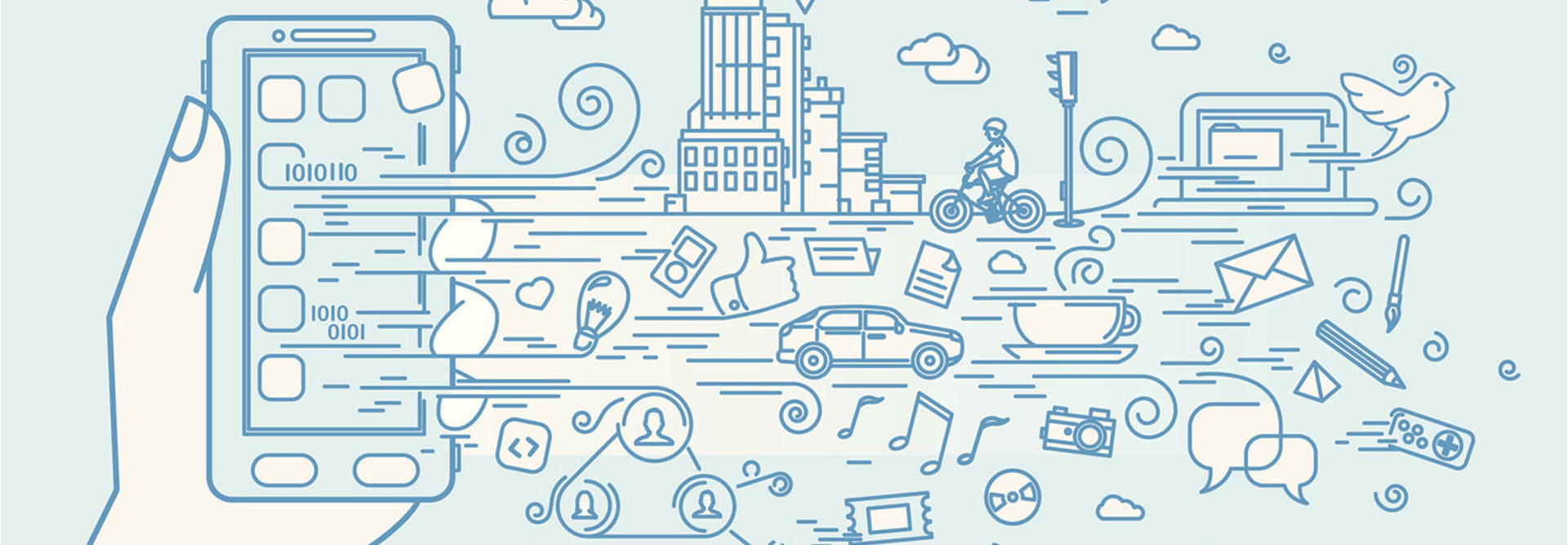How the App Store Economy Will Make IoT More Functional
Remember when mobile phones were simple, static devices that only made calls? The embedded software was tightly tied to the hardware, and users were essentially powerless to update the software, meaning there was little or no way to add or customize features.
Then came the smartphone, which set off a revolution with its ability for people to add their own functionality from app stores. Apple CEO Tim Cook told attendees of the Worldwide Developers Conference in early June that the Apple App Store now has more than 20 million developers and 500 million weekly visitors.
There’s a striking parallel between the app store economy that has built up around the smartphone and a similar emerging dynamic in the Internet of Things, the billions of internet-connected sensors and other devices that transform massive volumes of data into actionable intelligence. In fact, a new report by Zion Market Research predicts the global industrial Internet of Things market will grow from $146 billion this year to $232 billion in 2023.
Much like early mobile phones, embedded devices have been hardware-centric and fixed function. Once the device has been deployed — say, to help monitor performance and boost efficiency on an oil drilling platform — there has been little way to implement feature updates or address bugs. But that’s changing.
Customized App Stores Put Customer, Business Needs First
With the emergence of a new approach that makes updating and extending IoT devices as simple as what we’ve become accustomed to with our smartphones, companies can publish new apps and services via their own branded IoT app stores.
This means the functionality of deployed devices can be extended without replacing the physical hardware. A device can run multiple applications, which allows it to stretch beyond its original purpose and lets the end user or manufacturer avoid a new procurement or installation.
In a typical scenario for a multiapp device, the device manufacturer or service provider establishes an app store that includes applications from the company, and possibly from third parties such as partners, customers or an open-source developer ecosystem.
Rigado, which provides edge connectivity solutions for more than 300 global IoT customers and 5 million connected devices, exemplifies this strategy. The company has developed a multiapp device that allows them to customize their gateways for each customer from a curated list of IoT apps. Aside from providing solutions specific to individual customer requirements, this approach allows Rigado to cater to different industries, including retail and hospitality. The company plans to extend this capability to allow business partners to offer customized app stores for their customers.
This opens a world of opportunity for companies. With an IoT app store, they can introduce new apps and give early access for testing and feedback; provide incentives and pricing models to bundle apps; gain ecosystem awareness through analysis of app use and distribution; expand capabilities via third-party developers; authorize and govern what devices run what software; and vary update mechanisms based on the criticality of a device update.
The Benefits of the App Store Economy
Personally branded IoT app stores offer numerous additional advantages.
New revenue streams: For a device manufacturer that primarily generates one-time sales, an IoT app store offers the opportunity to create ongoing revenue, either through new features, additional services or extended support. In a world of declining hardware margins, such monetization provides a huge opportunity for device makers as they look to build a sustainable and future-proof commercial offering.
Controlled user experience: The option of creating either a public or private app store allows a manufacturer to select which features they want to release to their customers from software that is still in internal testing. Once ready to release a new feature, the manufacturer can simply push it to their public store, offering customers new functionality on their own terms.
Access management: Manufacturers can enhance security by allowing only approved devices to access their apps. If desired, authentication can also restrict certain developers to certain stores — both internal and external — depending on requirements.
Device Models: Using the same hardware device for different workflows represents a huge boost in flexibility and cost-efficiency. For example, a single-function industrial robot could be modified to take on additional jobs, or a drone could add new algorithms for detecting structural deficiencies in bridges — differences in use and function obtained simply from a downloaded app.
App Stores Fuel Pay-Per-Use Models for IoT
The emerging IoT app store economy is nurturing a concurrent shift to a subscription or pay-per-use model for IoT devices. For large industrial equipment, this will allow the purchase decision to become an operational expense versus a capital layout, reducing the upfront cost for equipment. A pay-per-use system also encourages the vendor to be more responsive to preventive maintenance to ensure the equipment continues to operate in the field.
The app store approach also encourages the creation of license models and revenue streams based on availability of specific features. For instance, Tesla is able to remotely configure its cars to enable self-driving capabilities in different models. Likewise, IoT devices can allow for mass customization based on specific customers’ needs, licensing and market demands.
The mobile phone industry has conditioned us to expect frequent feature updates and bug fixes. The day is coming soon when this will be second nature for IoT as well.









